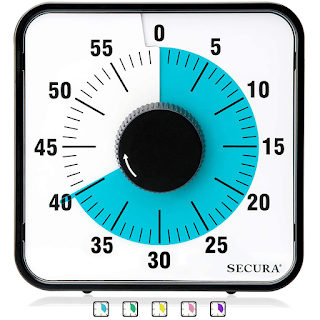by: Erin Peace, LCSW, RPT
School Counselor
Part 1: Executive Functioning As a Spectrum of Skills
In Part 1 of this blog series on giftedness and executive functioning, we explored the dimensions of executive functioning and reviewed how to self-assess the various domains of executive functioning.
Many gifted and twice-exceptional students require executive functioning support for a variety of reasons, including a difference in their prefrontal cortex development compared to same-age peers. Many times, gifted students haven’t needed to practice study skills or time management skills due to completing material in class or finishing homework more quickly than their peers. These students can also complete material so quickly that they didn’t learn skills around planning for larger projects.
The domains of executive functioning can be found on a spectrum, and each students’ abilities vary both among the population and within the individual. In this post, you will find information on how to help your student strengthen two domains of executive functioning: organization and time management.
Collaborate: Goal-Plan-Do-Review for Organization
After an individual has identified their executive functioning strengths and weaknesses using a self-assessment (See Part 1 for more information), students should then be invited to collaborate on solutions together. Use the Goal-Plan -Do-Review approach to help students build their organization/planning skill:
1. Goal: Before beginning, use a “team huddle” to identify what the student wants to accomplish (i.e. write a paragraph for my English essay)
2. Plan: How will I accomplish this goal? What materials do I need? Who can help me accomplish this goal? Turn the steps into a written list or checklist
3. Do: Implement the plan
4. Review: Reflect on how well the plan worked, and what could be improved upon next time
Over time, adults should phase out supervision of the plan and implementation.
Time Management
Students benefit from finding a homework/assignment planner that works for them. Although some students prefer paper planners, others prefer using apps or calendar functions. Have students try out different methods like a science experiment, reviewing what worked and what needs to be tweaked. When students are able to find all of their assignments in one place, along with the due date and a section for notes, they increase their ability to organize materials and prioritize assignments.
Visual timers can be a great resource for students, especially those who experience “time-blindness.” This timer can be used to set five minute increments of work time, and five minute breaks, before building up to longer amounts of time as stamina builds. Apps such as Routinery and Tiimo allow students to set routines with visual reminders and timers.

Although many students struggle with these skills at first, with practice and scaffolding they can build their confidence and sense of self-mastery, until they no longer need adult intervention and supervision.
4. Review: Reflect on how well the plan worked, and what could be improved upon next time
Over time, adults should phase out supervision of the plan and implementation.
Time Management
Students benefit from finding a homework/assignment planner that works for them. Although some students prefer paper planners, others prefer using apps or calendar functions. Have students try out different methods like a science experiment, reviewing what worked and what needs to be tweaked. When students are able to find all of their assignments in one place, along with the due date and a section for notes, they increase their ability to organize materials and prioritize assignments.
Visual timers can be a great resource for students, especially those who experience “time-blindness.” This timer can be used to set five minute increments of work time, and five minute breaks, before building up to longer amounts of time as stamina builds. Apps such as Routinery and Tiimo allow students to set routines with visual reminders and timers.
Although many students struggle with these skills at first, with practice and scaffolding they can build their confidence and sense of self-mastery, until they no longer need adult intervention and supervision.

